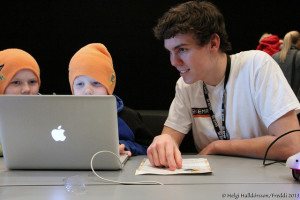 Online education is often talked about as a homogeneous force poised to either bring radically improved education to every corner of the globe or ruin learning and knowledge as we know it.
Online education is often talked about as a homogeneous force poised to either bring radically improved education to every corner of the globe or ruin learning and knowledge as we know it.
But in reality there are many different types of online education across which generalizations can’t be made. A more nuanced understanding of these varieties, then, is necessary in order to fully articulate the possibilities and challenges for the future.
Some categorize online education by content type (text, video, “gamification”) or by the methods of interaction (email, live chat, cloud-based documents). And although these are important to our discussion, our categories are broader and focus more on who is taking the classes and what they get out of it. Overall, we’re talking about education completed through the World Wide Web. But beyond this, several forms of online education exist with little else in common.
MOOCs – This form of online learning, which stands for Massive Open Online Course, is the most-hyped as a game-changer in the industry. Venture capital has been flowing to platforms such as Coursera and EdX, and top universities and colleges have been scrambling to join the party at risk of being branded as behind the times.
A MOOC is free to join and courses can be completed from anywhere in the world. As far as the educational experience, MOOCs are typically very professionally done as major universities are pouring resources into them. Interaction is usually optional for students: the model is self-paced with some assignment deadlines. The most common forms of assessment are quizzes and peer-graded assignments. In some courses one can easily coast by with little engagement with the material, especially if grading relies solely on quizzes allowing multiple submissions. If students complete a MOOC, they receive a certificate of accomplishment from the institution (not to be confused with official credit, although there are a couple of pilot projects in progress that will offer it).
The “massive” part of the name certainly holds true, as the most popular courses attract hundreds of thousands of students, but many question the viability of the “open” portion for the long run. Increasingly, students must pay to get some form of a “verified” certificate which itself still doesn’t have much of an official standing. As of now, all content on these major platforms can still at least be accessed without paying, but will that stay the case when the hype dies down and these platforms need to make real money?
Self-Produced MOOCs – Similar to how online education as a whole tends to be generalized, the subcategory of the MOOC itself is starting to split into some interesting directions. Many of the top MOOCs today are the highly-polished creations of star professors and digital media departments at flagship universities. But other MOOC providers are trying to open things up beyond the ivory tower. Udemy, a rapidly growing platform boasting over 5 million students and $48 million in VC money, allows anyone to create a course about anything and even charge for it. One recently profiled 20-something turned online teacher made $20,000 in a single day from his $199 course, a sum that is “more than some adjunct professors make in a year.”
Asynchronous Accredited Online – Long before all this hype around MOOCs, however, other forms of online education have existed for many years, usually carrying official credit from a school. The first fully online university, in fact, earned its accreditation all the way back in 1993!
The most common type of “official” online course is asynchronous, which means that like MOOCs they are self-paced. The flexibility for all types of students is touted as one of the greatest benefits of this model. But when your local small college doesn’t have nearly as many resources to devote to online course production as the big MOOC players, some might ask what the draw is. The big answer, of course, is that this will give you a real credential that a MOOC can’t. You also have direct access to your professor, not a discussion forum, as well as a wide variety of student services from the institution.
Synchronous Accredited Online – Synchronous online education means that students and instructor must all access the online course space at a particular time, like a traditional face-to-face class, with sessions held by video conference. In many cases the professor takes the floor while students participate by contributing to an online chat and turning on their microphone if they are called on or have a question to ask. In terms of student motivation and completion rates, this model probably has the most potential, but it is also the most expensive and does not scale. That’s why you don’t hear it a whole lot in the “future of higher ed” debates.
Hybrid Courses – A final category is the hybrid course, which involves some classroom time and some online sessions. You could add the “flipped classroom” model to this category, which involves assigning video and other online modules to be completed at home and reserving in-person sessions for active learning exercises.











It is interesting to learn that there are various types of online courses. One of the biggest open ones are MOOCS, however, there are also hybrid courses. You can also learn from self produced MOOCS. Learning about these things are a great asset to education.